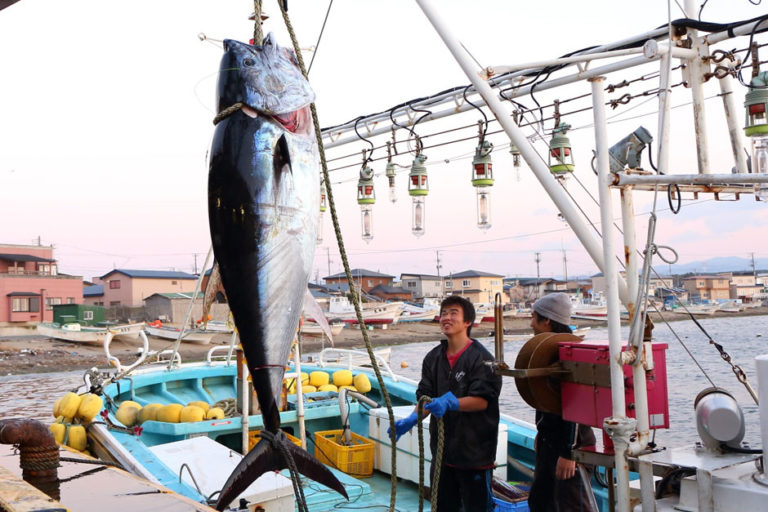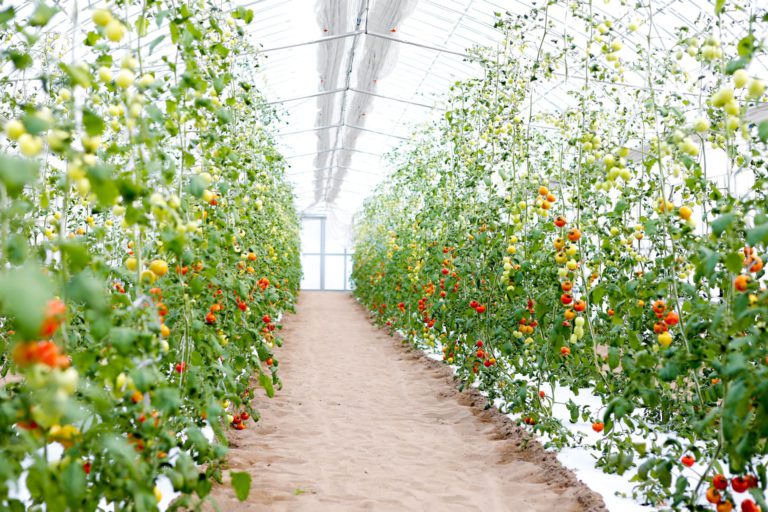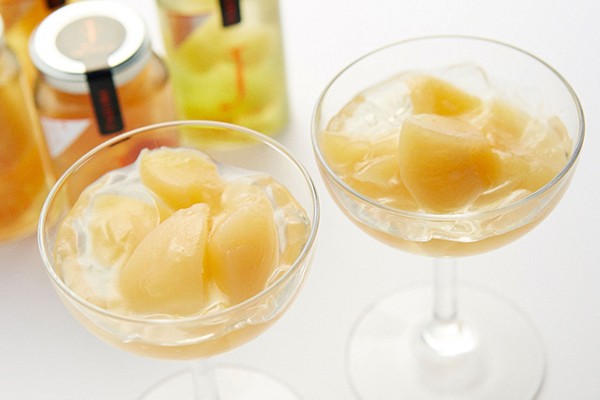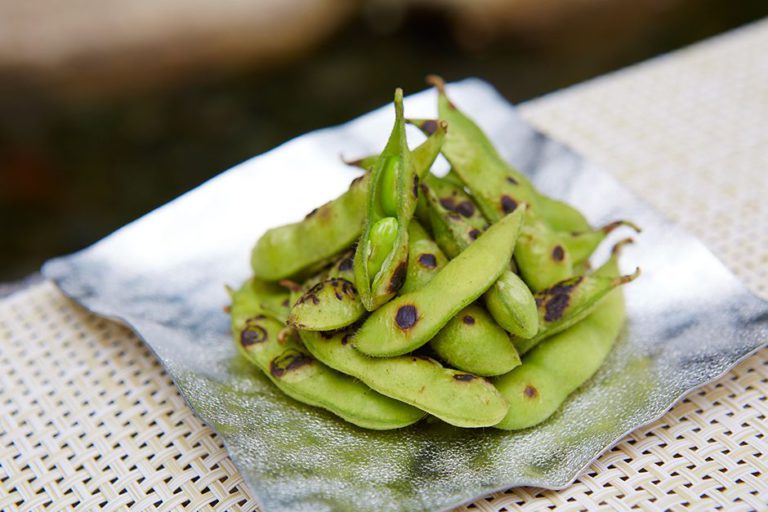Itayanagi, a small town suffused with a love for apples
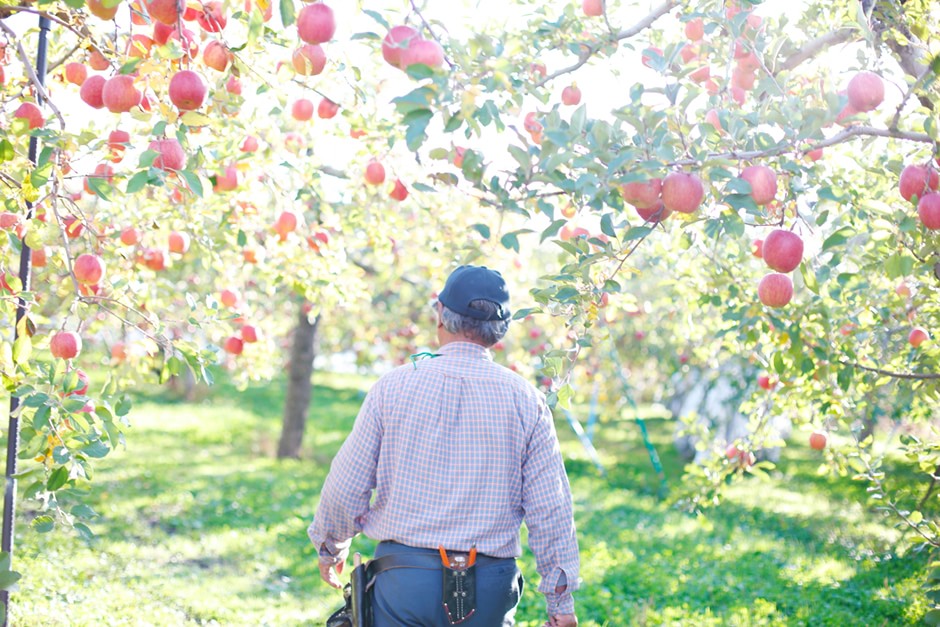
Itayanagi—the perfect environment for apple-growing
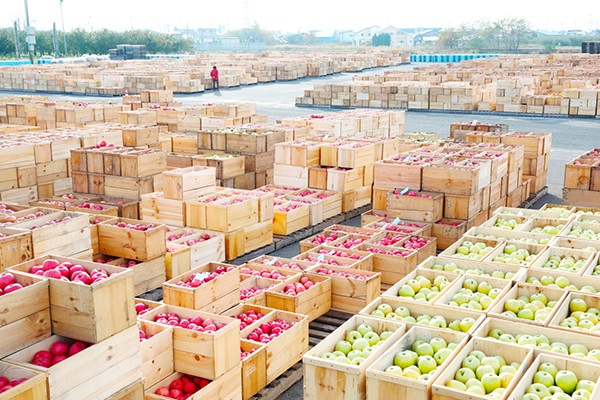
Aomori prefecture has long been synonymous with apples. The history of apple production dates back to the Meiji era. The first apple seedlings were brought to Aomori in 1875. Itayanagi was the only location in the Kita-tsugaru-gun district to be given some of the precious seedlings. Over the ensuing 140 years, Itayanagi has cemented its place as the spiritual home of apple production in Japan.
It’s 7:30 in the morning, and we are at Tsugaru apple market, the only dedicated apple market in Japan and the first port of call for Itayanagi apples on their journey from the orchards. The market is a sea of pine boxes filled with freshly picked apples stretching out as far as the eye can see. According to Shigeru Ishidoya, deputy president of Tsugaru Apple Market, there are about 55,000 boxes in today, each weighing about 20 kg. The market can handle up to 80,000 boxes in peak periods. Closer inspection reveals that the bulk of the apples today are Fuji, the most popular variety in Aomori, with a smattering of green Orin and a rather unusual yellow variety. Every box carries a label showing the farmer’s name, the variety, the size and class, and finally the quantity. Before long it is time for the auction to begin.
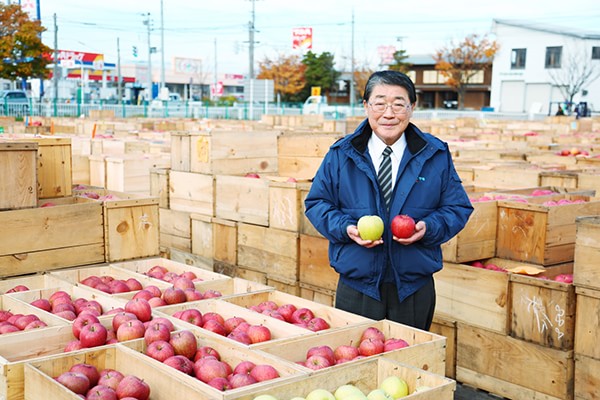
Each box contains apples of only one variety, and they should all be of equivalent size and quality. Most buyers are looking for good color and nice round shape. Pine boxes have been used for years because they create good conditions for storing apples.
Ishidoya tells us that apple production has flourished in Itayanagi because of the excellent soil. picture of Tsugaru apple market picture of Mr. Ishidoya “In the past the Iwaki river has breached its banks many times, bringing debris flows that have deposited nutrients in the soil,” he explains. “It turns out that these nutrients are perfect for producing big, healthy apples. The fact that we are sandwiched between two rivers, the Iwaki to the west and the Togawa to the east, also creates good conditions for apple orchards. Plus the overnight temperature drops quite low, which causes the fruit to tighten up, producing a more concentrated sweetness.”
In recent years, Japanese apples have been developing a strong reputation in overseas markets, and this is reflected in rising exports in the Asia region, particularly Taiwan and mainland China.
In addition to the climatic conditions, there can be no doubt that the great taste of Itayanagi apples is also due to the expertise of the local farmers. We decide to visit an apple orchard to see for ourselves.
Leaving the leaves on the trees brings out the full flavor and sweetness
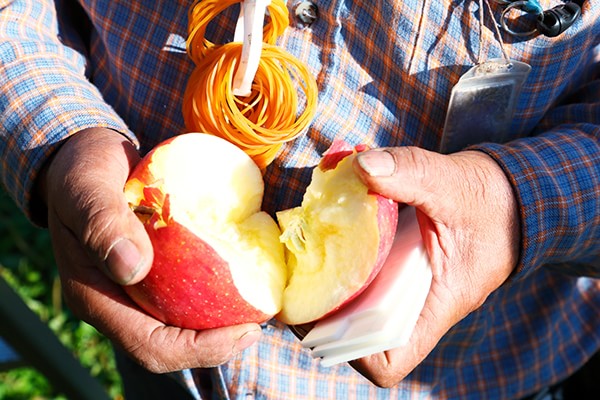
Some distance away down in the orchard we can see a person beavering away intently from the top of a stepladder. This turns out to be Tsutomu Sato, head of the Itayanagi Organic Farming Group. By way of introduction, he picks off a nearby apple, cracks it open on the top of the stepladder and offers us a bite. It almost seems a shame to destroy such a work of art but we accept the offer gratefully. A single bite brings an explosion of juice and delicious concentrated sweetness. According to Sato, simply cutting the apple in two is enough to release a river of juice.
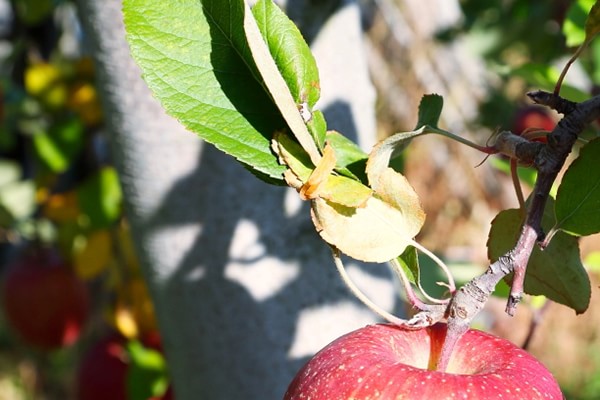
Sato describes the strict regulations that apply to reduced-chemical farming operations. He also tells us about his special technique of leaving the leaves on the trees. Most apple growers prune off any leaves that obstruct the sunlight just prior to harvest, because sunlight helps to give the apples that full red color. But Sato believes it is better to leave the leaves on the tree to promote photosynthesis, which sends more nutrients to the apple and improves the taste. Meanwhile, to create the attractive red color he carefully ties up the leaves above each apple with a rubber band.
“If you bundle the leaves together then the sunlight still reaches the apple,” explains Sato. “It takes me a full day to do ten trees.”
It’s a daunting task to do this for each apple. A bright red apple with an exquisite balance of sweetness and acidity is born because it is made with love and effort as if raising a single child. It is said that the apples grown by this “leafless farming method” are distributed as “leafless apples” leaf balls “” mainly for gifts.
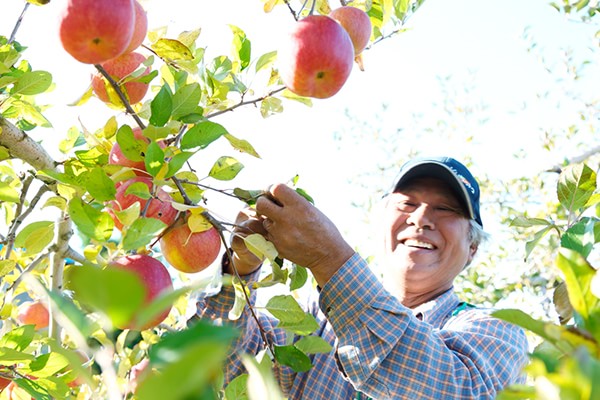
Sato has been an apple farmer for over 50 years, since the age of 15. But he feels that he has only really managed to perfect his technique over the last ten years or so. Even now, he is still actively working in the orchards.
“It’s because I love it,” beams Sato. “If you’re going to be a farmer, you have to put your heart and soul into it. You have to dream big. I reckon Aomori apples can match it with the best in the world.”
Apple farmers have no holidays. After harvesting from the end of October to the end of November, we will plant seedlings, make compost, and prun the branches for the next year. When white flowers bloom around May, you can’t take your hands off until they grow into fruits. I felt that the craftsmanship of Itayanagi Town was born from a deep passion to enjoy even the labor of daily farming.
Promoting apples in so many ways
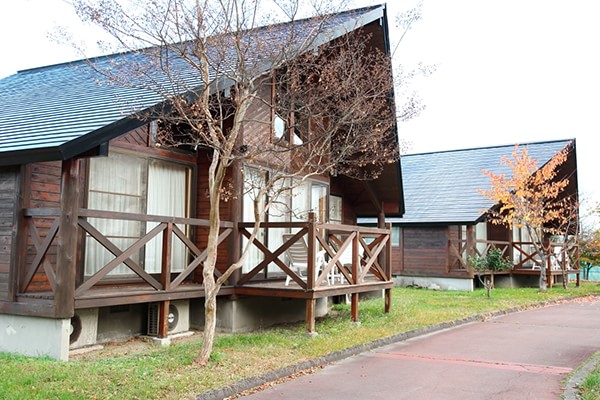
The local government in Itayanagi is pursuing a range of programs designed to position their town as the undisputed home of the apple in Japan. One of these is the Itayanagi Hometown Center, described by Mayor Ichiro Tateoka as an “apple theme park, a tourism operation based entirely around our wonderful apples. The Center is home to a whole host of tourist attractions including a pick-your-own orchard, holiday cottages, restaurants, a direct sale shop, even a hot spring. Visitors can also try out a number of unique apple-based crafts, such as dyeing cloth with apple-based vegetable dyes, and weaving Rinju bags from the bark of the apple tree. The key concept is to use every bit of the apple tree with nothing being wasted. And it showcases a whole new side of the apple.”
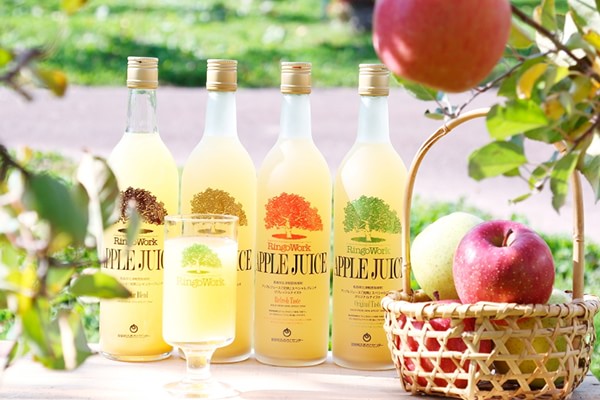
Mayor Tateoka is also chairperson of the Itayanagi apple industry promotion body Ringo Work Institute.
“The idea for Fully Ripe Special Blend dates back to 1988,” explains Tateoka, “at a time when apple juice was generally seen as little more than a means of using up bruised or damaged apples that you couldn’t sell. We decided to buck the trend by making a premium juice from 100% ripened apples.
It took a great deal of trial and error before we finally hit upon the winning combination.”
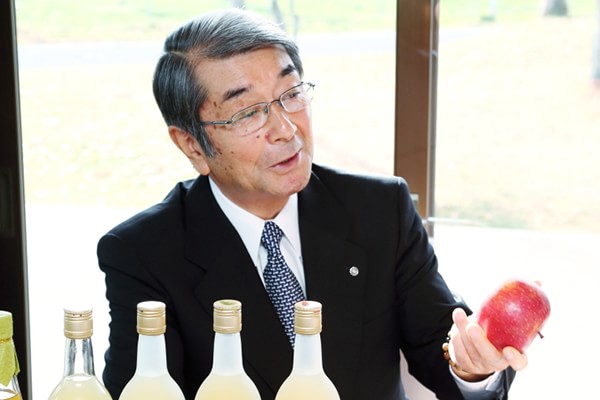
The high-end look of the product is further accentuated by the handsome frosted wine bottle. It is a product that offers the full flavor of apples with the sweetness of nectar. The apple trees of Itayanagi certainly are hard workers, contributing not just apples but bark and other useful materials. Mayor Tateoka is all smiles as he describes another unique initiative associated with the Ringo Work brand: a special local government ordinance in Itayanagi entitled “Eat Apples Skin and All.”
“The ordinance is designed to encourage production of good, healthy apples where you can eat the entire apple with confidence, skin and all. It includes guidelines on farming techniques as well as the traceability system, a joint undertaking by the apple market, JA (Japan Agriculture) and the local council that provides detailed information on our apple growers. We also hold apple-growing presentations and workshops for the benefit of our younger growers. These have been very successful in encouraging young people to follow their parents into the industry. Our ultimate aim is to position Itayanagi as Japan’s premier Apple Village dedicated to maintaining a health apple industry. We also want Itayanagi to be at the forefront in other areas such as promoting environmental conservation, preserving our cultural heritage, and providing good support services for our producers.”
Itayanagi-cho’s efforts to focus on apples, including production, distribution, processing, and tourism resources, are now being visited by foreigners.
In Itayanagi, where many people live with apples, the whole town was filled with “apple love” created by people’s feelings.

